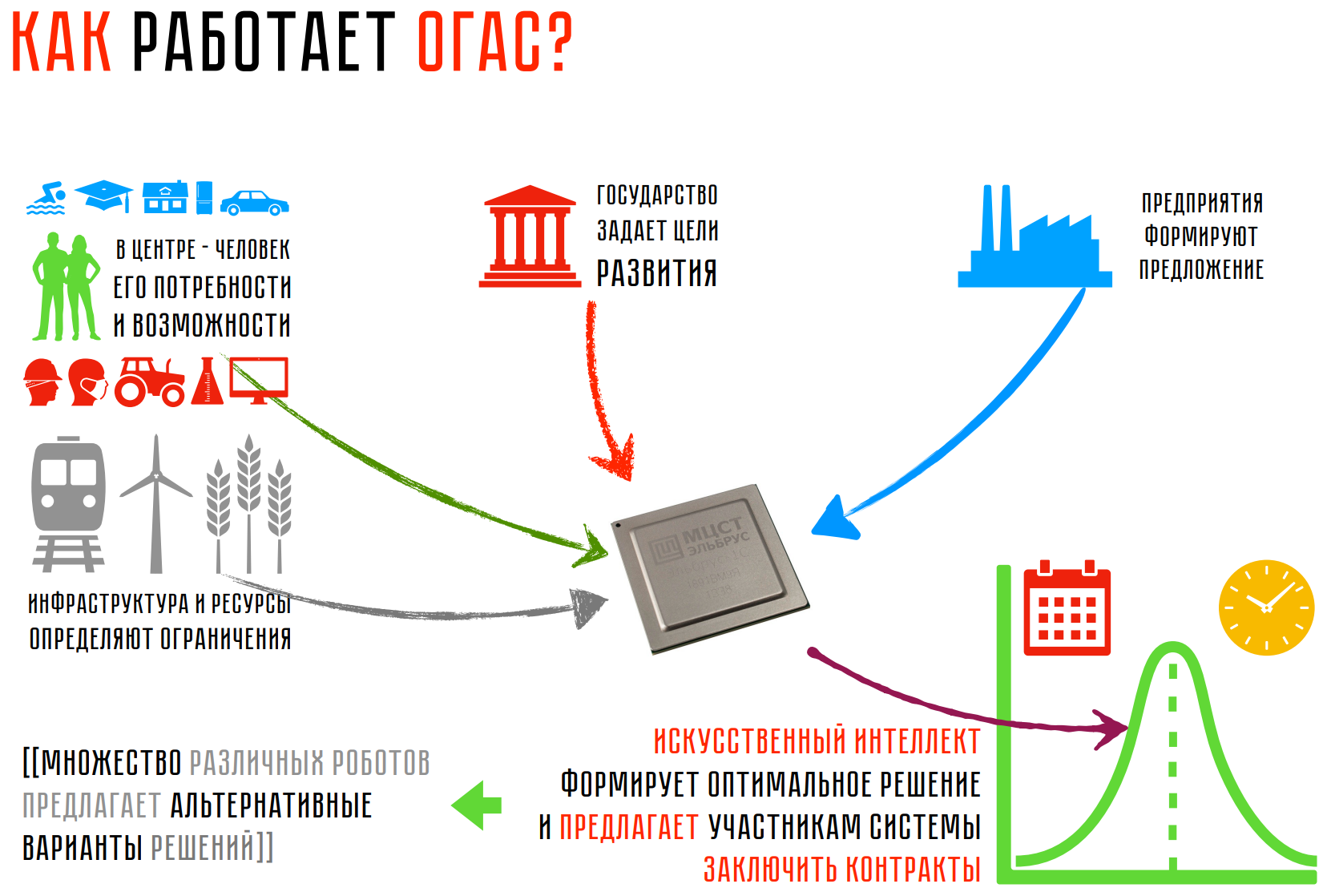Although many of the models and technological solutions proposed by Vitaly Demirov can be traced back to the Soviet era—most notably to Academician Viktor Glushkov’s OGAS project (an initiative to build a digital system for managing the planned economy)—today’s advances in blockchain and artificial intelligence have proven the technical feasibility of an automated system for counterparty interaction, one fully adapted to the realities of the modern market economy and international trade.
Glushkov’s initiative was called the Nationwide Automated System.
Demirov’s approach to automating counterparty interaction expands this into the Open Global Automated System (OGAS).
The name itself underscores its openness (transparency for technical audit, absence of undeclared functions, and capacity for rapid scaling), and its transnational character (enabling interaction among entities operating across jurisdictions and working under different technical regulations, protocols, and standards).
 For comprehensive integration of digital systems, methods such as ESB (Enterprise Service Bus) and CDM (Common Data Model) are commonly applied. While they address different tasks, they are often used together. However, the particular importance of OGAS arises from the fact that although ESB and CDM create internal information environments, neither is capable of establishing a shared digital space.
For comprehensive integration of digital systems, methods such as ESB (Enterprise Service Bus) and CDM (Common Data Model) are commonly applied. While they address different tasks, they are often used together. However, the particular importance of OGAS arises from the fact that although ESB and CDM create internal information environments, neither is capable of establishing a shared digital space.
Such a shared digital space begins when the complexity of system interaction grows—not only within internal information domains but, more importantly, across transnational digital environments.
This complexity first emerges from the need for collective editing of database transactions by multiple participants and external organizations, which requires a clearly defined framework of interaction. The challenge intensifies when transactions created by different authors become interdependent—where the execution of one presupposes the execution of another—and their inclusion depends on a set of preconditions agreed upon by all certifying nodes (or by a designated group of participants, as in a consortium blockchain).
OGAS provides an effective mechanism for managing such interdependent transactions by enabling a process of collective planning, implemented through locally decentralized consensus. This is supported by mathematical methods of parallel optimization of objectives under conditions of complete data and minimal information asymmetry.
Since such planning is continuously adjusted online and accounts for the diversity of participants’ goals, OGAS emerges as the most suitable model for the social market economy and for extensive transnational cooperation.

